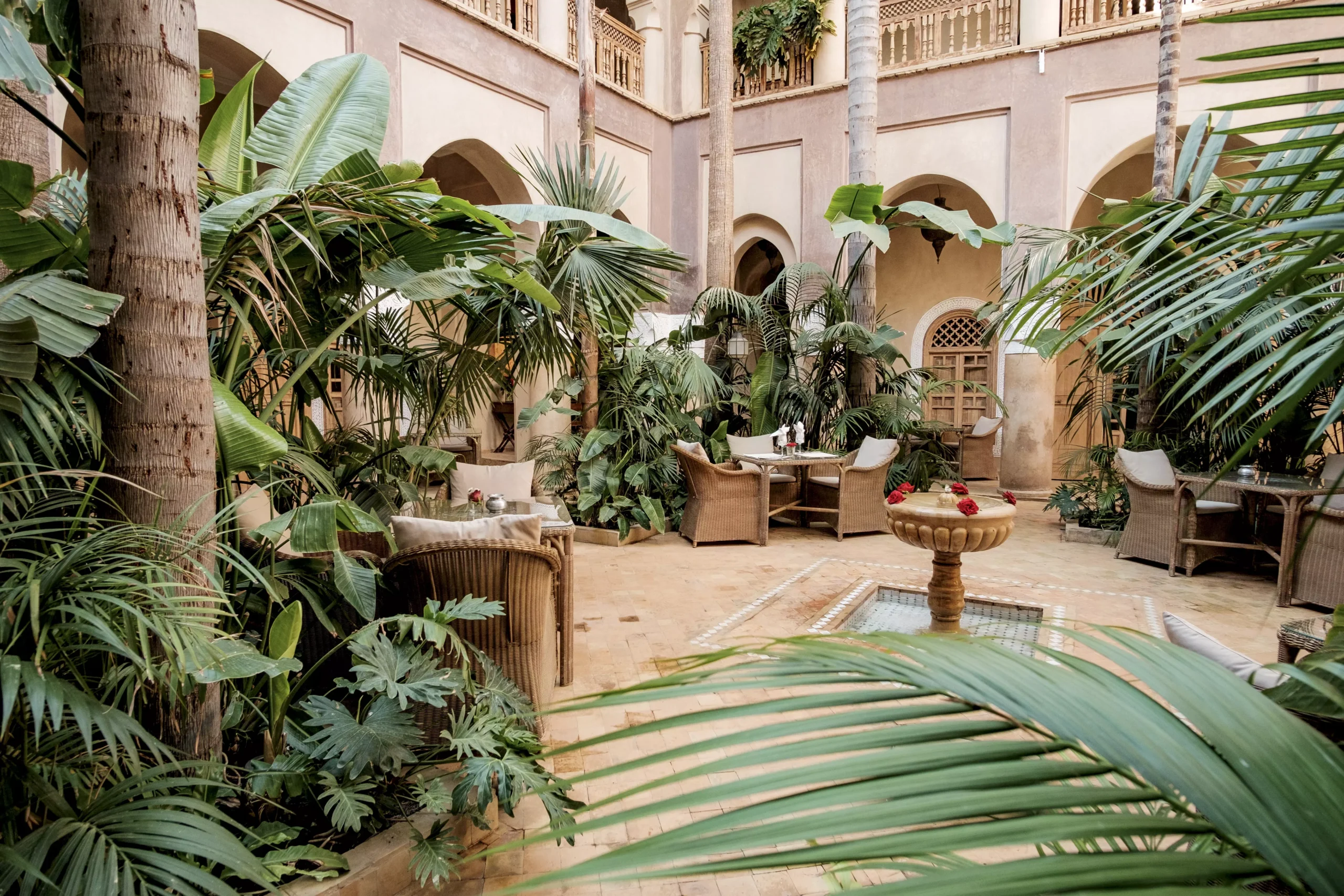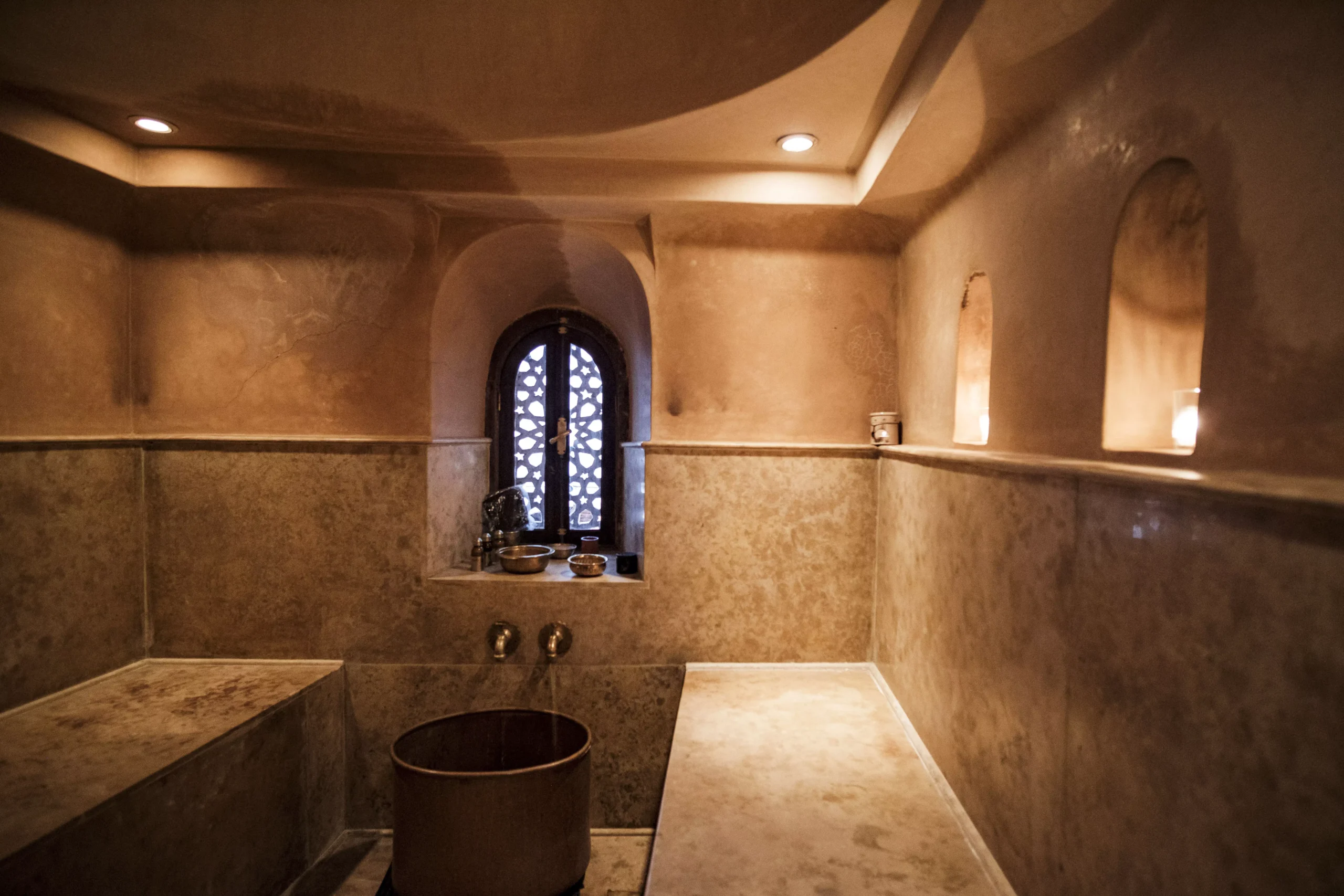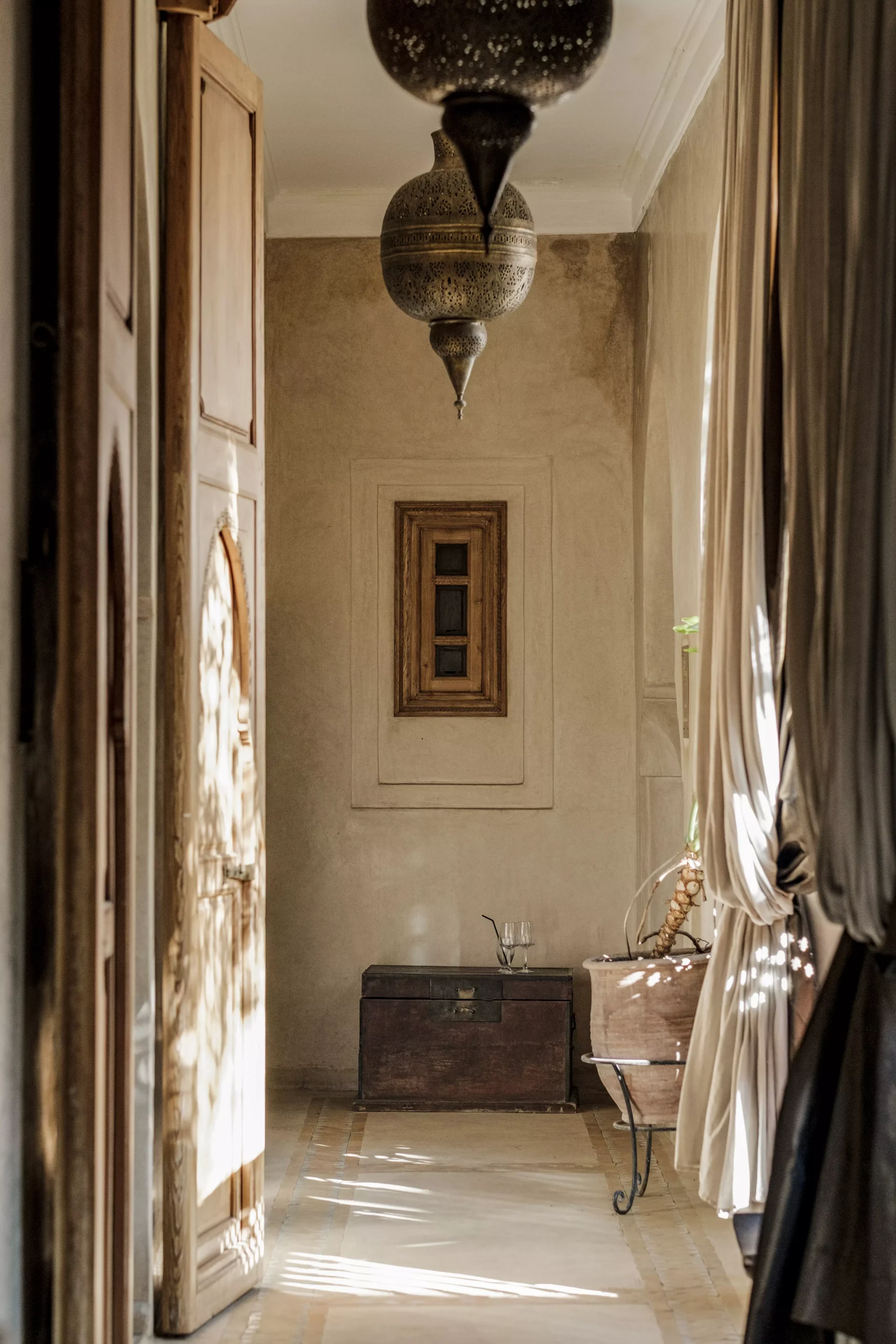

The Riad
WELCOME
Villa Nomade, a marriage of the art of refinement and hospitality...
In the heart of the Medina, this riad, built at the beginning of the last century, has been restored in the pure Moroccan tradition. Floors in natural terracotta, walls finished in tadelakt, decoration meticulously cared for. Villa Nomade is an authentic haven of voluptuousness.


Services
Terrace
Swimming Pool
Wifi
Restaurant
Bar
Spa
Room Service
Transfer

Outdoors
The terraces
Overlooking the medina, the terraces unfold their oriental charm. Surrounded by ochre walls, they feature a winter lounge, where evenings are spent by the fireplace; the outdoor area of the restaurant from which one can admire the Sidi-Bel-Abbes mosque and its glazed tiles, as well as a relaxation area. In the distance, the snows of the Atlas peaks contrast with the mineral environment of the plain.

Free access
The swimming pool
On a discreet terrace, sheltered from prying eyes, not far from the hammam, the pool made of traditional Zelliges and Tadelakt offers a refreshing escape after a hot day in the Medina. In this oriental bath, the murmur of water blends with the enchanting fragrances of jasmine, creating an exquisite haven of peace.

Outdoors
The patio
Nestled in the heart of the Riad, a true haven of greenery and serenity, the patio opens under a sky of pure blue. Surrounded by elegant archways and walls adorned with delicate floral carvings, the gebs, this haven exudes a gentle coolness. At the center, a fountain where rose petals trickle down. It is pleasant to relax seated in the traditional B’hou while the scents of orange blossom delicately envelop the air.

Discover
The History of the Riad
Villa Nomade is the childhood home of Hassan El Mazouni, a professor of oriental languages, Iranologist, and director of research at the University of Marrakech. He grew up there with his seven brothers and sisters until 1975. It was the home of his grandfather, Mohamed Ben Abdelsalam El Mazouni, a wealthy fabric merchant and scholarly landowner who was polygamous, born in 1900. He acquired the riad for his 50th birthday and led an aristocratic life there...
A pioneering spirit
All lived in good harmony in this protective bubble that the grandfather regulated with authority and generosity. He insisted that each of his children and grandchildren (9 men and 9 women) receive a higher education. The riad had a real classroom equipped with a large blackboard where one of Hassan's aunts gave lessons in English, Arabic, and French. The fkih of the neighborhood's Quranic school (a man of faith) also came on Fridays to teach the Quran to the children. Life in the riad was peaceful and joyful, and Hassan only has fond memories of it. The wealthy grandfather made his family's education his mission. He did not hesitate to send his children and grandchildren to study abroad and to travel so they could discover the world and open up to other cultures.
A convalescent home
Its construction is said to have started in 1184 and lasted 8 years. Its function was that of a "bimaristane," a hospital institution and more specifically a convalescent home. Its location in the peaceful neighborhood of Zaouïa was not chosen by chance: the east of Marrakech, known for its tranquility and gardens, was deemed ideal for a rest home. Its proximity to the mausoleum of Abou El Abbas es-Sebti, the 3rd great Saint of Marrakech, revered by all Muslims, made the location of the bimaristane an obvious choice. Abou Ishak Addani, the "doctor," examined the patients of the bimaristane, assisted by his team of male and female assistants, and had a laboratory within the establishment, equipped enough to produce his own medicines. It was not until 1920 that the bimaristane was transformed into a riad.


